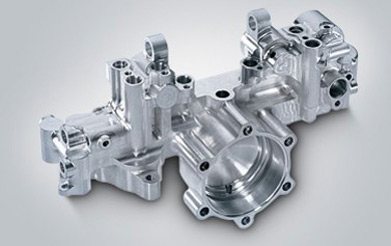Aerospace CNC Machining

——Unlocking Flight Capabilities with Micron – Level Precision
1. Precision Breakthrough: The “Safety Code” of 0.005mm
In the aerospace field, the principle “A miss is as good as a mile” reigns supreme. Jili Technology uses CNC machining as a sharp tool to inscribe the “safety gene” for aircraft components:
- Aero – engine turbine blades: Employing 5 – axis machining centers + grating ruler dynamic compensation, the surface profile tolerance is locked at ±0.005mm, enabling efficient airflow work and pushing the engine thrust to new boundaries.
- Satellite connection flanges: Real – time calibration with laser tool setters + in – process measurement closed – loop control. The aperture and perpendicularity errors are accurate to the hair – like level, ensuring the on – board equipment stays “motionless” and data transmission is error – free.

2. Material Conquest: Machining Philosophy for “Extreme Materials”
Aerospace materials come with “difficult personalities”? Jili Technology “tames” them with customized processes:
- Titanium alloy casings: The high – pressure internal cooling system directly addresses the heat conduction issue, precisely reducing the cutting temperature to below 300℃. The helical interpolation milling evenly distributes the cutting force, controlling the casing cylindricity error to 0.01mm without damaging the mechanical properties.
- Carbon fiber wing skins: Diamond – coated tools (with a cutting edge radius of 0.02mm) + low – stress cutting (speed of 50m/min + feed rate of 0.05mm/r), combined with real – time cutting force monitoring. The cutting surface roughness is Ra≤0.8μm, eliminating delamination and chipping, and maximizing the lightweight advantage.
3. Structural Intelligence: From “Design Imagination” to “Physical Equipment”
Innovative aerospace designs need CNC machining as a backup:
Take the frame of the manned spacecraft re – entry module as an example —
Take the frame of the manned spacecraft re – entry module as an example —
- 3D Simulation First: Pre – simulate over 200 collision – avoidance paths in a virtual environment to avoid machining interference in advance, enabling the formation of special – shaped stiffeners and curved transitions without dead angles.
- Adaptive Machining Compensation: Real – time collection of machine tool vibration and cutting force data, dynamically compensating for thermal deformation errors (with an accuracy of 0.002mm). The profile tolerance of special – shaped curved surfaces and the coaxiality error of multi – chamber structures are controlled to 0.01mm and 0.008mm respectively, steadily transforming “design imaginations” into reality.
4. Quality Loop: “Reliable Protection” Throughout the Lifecycle
Jili Technology creates a “quality iron triangle” for aerospace components:
- Raw Material Traceability: When titanium alloy billets arrive, direct – reading spectrometers lock in over 20 element compositions (with an error of 0.001%), and ultrasonic flaw detection detects defects at the 0.1mm level, purifying materials from the source.
- Process Monitoring and Tracing: Industrial cameras record key processes throughout. Laser interferometers calibrate the machine tool 3 times per shift. If the positioning accuracy exceeds 0.003mm, the machine stops immediately, nipping errors in the bud.
- Final Product Extreme Testing: Industrial CT performs 3D scanning, detecting internal defects at the 0.05mm level. High – frequency fatigue testing simulates 10⁶ load cycles to verify mechanical properties. What we deliver is not just components, but “flight – level reliability”.
In the vast expanse of aerospace, Jili Technology, with CNC machining as an anchor, uses micron – level precision, customized processes, and full – process reliability to forge “high – capability” components for aircraft. Standing side by side with the industry, from components to complete equipment, we embark on the journey of “reaching for the moon”.


